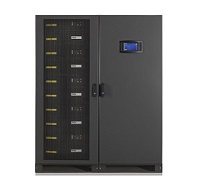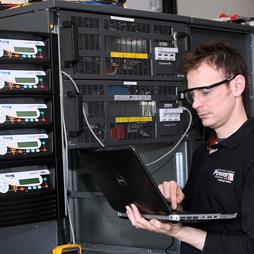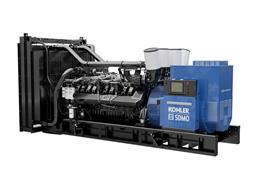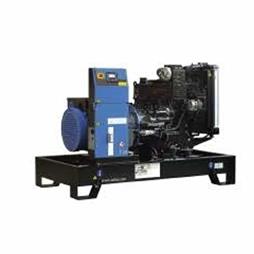Data Centre virtualisation and its demands on UPS technology
18-10-2016
Data Centre virtualisation and its demands on UPS technology
Posted on 13th October 2016
Continued growth in data centre virtualisation is inevitable, given the advantages it offers. However, the strategy creates significant challenges for data centre power infrastructures. In this article Alan Luscombe, Director at Uninterruptible Power Supplies Ltd., a Kohler company, describes how modern, modular UPS topology can assist data centre managers and owners in meeting these challenges.
Virtualisation is a powerful strategy that continues to enjoy steady growth within data centres. Its strength comes from making the IT process more productive and agile, delivering higher levels of service at lower prices. In fact, market research analysts Reportsnreports predicts a CAGR growth in the global storage virtualisation market of more than 24% from 2015 to 2019, while according to Arbor Networks, AT&T expects to virtualise and control more than 75% of its network using a software-driven architecture by 2020.
Virtualisation and its power challenge
Along with its proven benefits, virtualisation also has significant implications for data centre power infrastructures, including uninterruptible power supplies (UPSs) and other key components. Virtualisation consolidates multiple IT resources onto a single server, initially reducing the number of servers and power required. However over time, increasing business demand typically draws the freed-up servers back into operation, with utilisation heavier than ever due to virtualisation. VMW are claims that virtualisation can increase hardware utilisation from as low as 5% to as much as 80% – and all this drives power demand significantly higher than original levels.
Accordingly, UPSs have to be flexible and scalable to cope with this dynamic and growing load demand. As initial virtualisation decreases the load, it should be easy to take some UPS capacity offline to avoid unnecessary UPS powering and cooling. Adding capacity to facilitate ongoing growth should also be as straightforward as possible, ideally without the need to interrupt power when adding or removing capacity, which also shouldn’t have an impact on the UPS equipment’s footprint.
Scalable modular UPS solutions
Fortunately modern, modular UPS technology that can meet these challenges is available. One popular implementation comprises a vertical racking system that can be populated with one to five UPS modules of 100 kVA each, the PowerWAVE 9500DPA. ‘Hot swap’ capability allows modules to be removed from or added to the rack to meet changing load requirements, without interrupting UPS power to the load. If a module does fail, hot swapping minimises Mean Time to Repair (MTTR), significantly boosting availability.
The design uses Decentralised Parallel Architecture (DPA), where each module contains all hardware and software essential for full system operation. No components are shared, so single points of failure are eliminated, ensuring very high reliability.
Availability can be further improved by operating in N+1 redundancy mode. Five 100 kVA modules, for example, could provide fully redundant power for a 400 kVA load. Adding modules to the rack to increase capacity is called vertical scaling. Horizontal scaling adds further capacity by paralleling up to six racking units, to support loads of up to 3 MVA.
As the load increases, racks can be added with minimal disruption as each has just a 1.49 m2 footprint even while delivering a power density up to 335 kW/m2. Front and back clearances are also minimal, maximising the floor space available for revenue-earning servers. Near unity input power factor at all loads reduces input cable and fuse sizing, cutting cost for the electrical installation.
Battery right-sizing, and communications capability
These rack-mounted UPS systems operate with external battery cabinets, allowing flexibility in battery sizing. This is important for virtualised environments with a requirement to shut down a large number of virtual machines (VMs) in the event of an extended power failure. VMs can migrate from one server to another; knowing how many VMs are running on any host at a particular time becomes difficult. Additionally, shutting down large numbers of VMs simultaneously can cause contention for storage I/O, extending the time required for graceful shutdown. Having sufficient battery autonomy to allow for these scenarios is therefore essential.
Comprehensive two-way UPS communications capability is also critical for protecting the heavily-utilised servers in these environments. Simple Network Management Protocol (SNMP) is one popular platform- and vendor-independent solution. SNMP-enabled UPSs become network devices that can transmit and receive management variables across enterprise-wide networks. UPS-protected devices can be controlled and rebooted remotely across the network. If an extended power failure threatens battery autonomy, information can be safeguarded while multiple servers and communications networks are automatically and gracefully shut down.
Conclusion
The continued penetration of virtualisation into data centres is inevitable, given the IT efficiency advantages that it offers. However virtualisation invokes a dynamic, sometimes unpredictable but nearly always increased power demand from a dense population of heavily-utilised servers. Supporting these data centre environments with UPS power protection that is equally as responsive and flexible, while both essential and challenging, can be achieved by sourcing the right solutions now available from leading UPS vendors.






